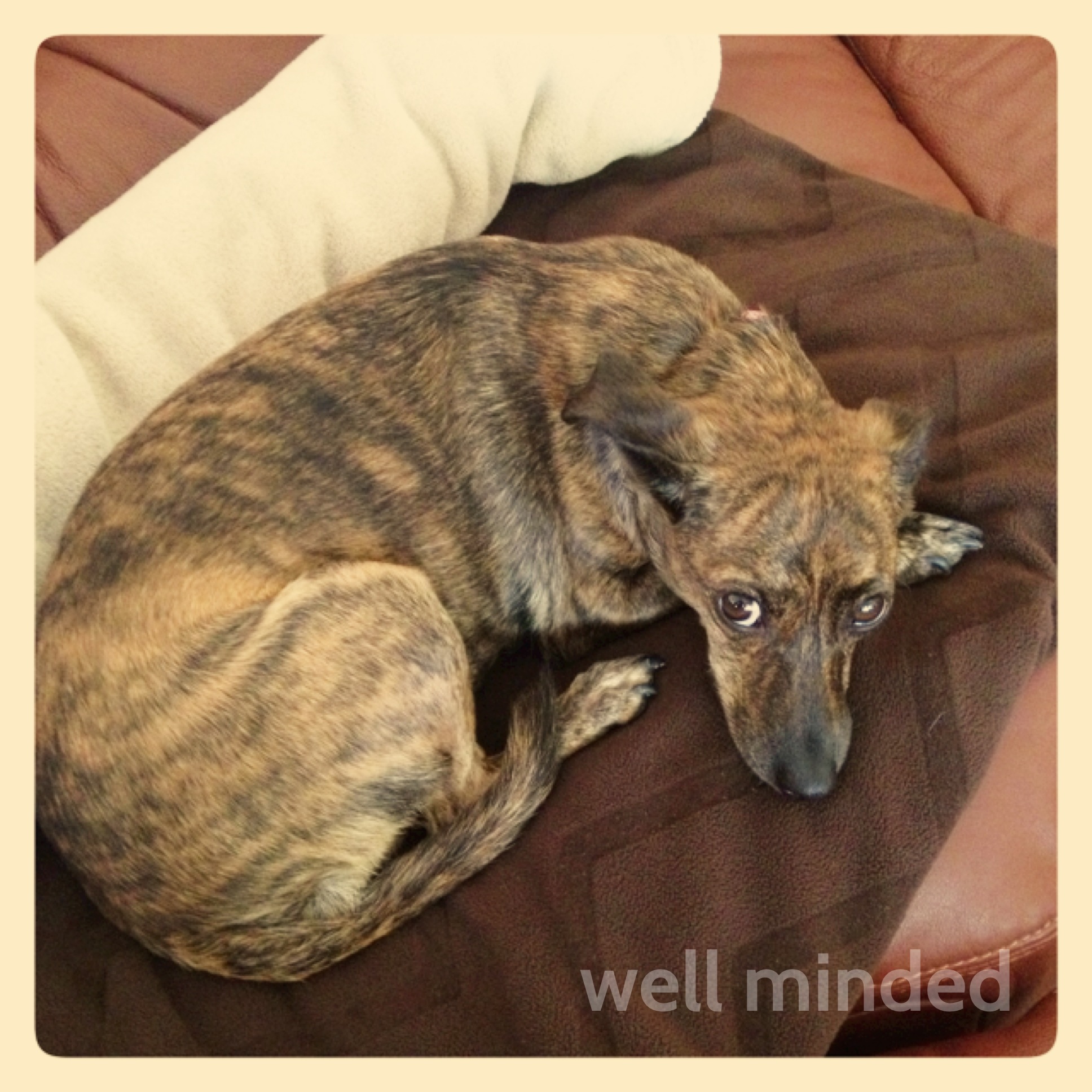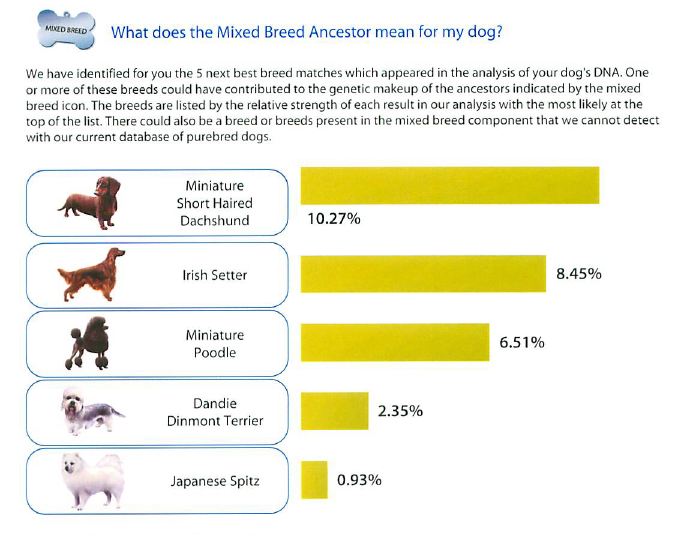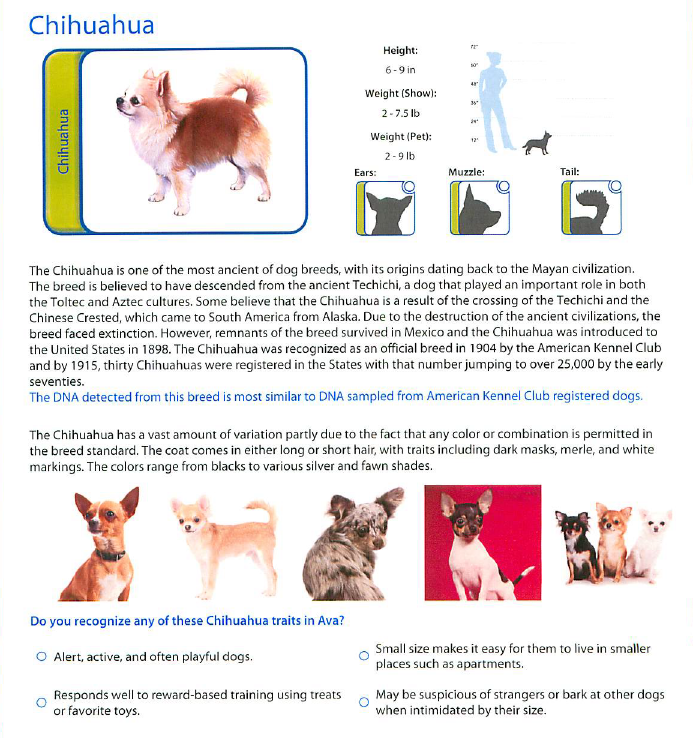I've been taking care of Ava almost every weekday for the past two years. Her family adopted her from a local poodle rescue. Huh? Does this look like a poodle?

Since Ava's ancestry was a complete mystery, her family decided to have a DNA analysis done. Their veterinarian offered the convenience of doing the blood draw for the test during her regular appointment and sent it to Wisdom Panel for analysis. Though there are less expensive options, Ava's mom, Maura, liked the convenience of doing it right there at the vet. She paid $125.00. Maura explained that there are at-home testing options that use saliva that some people may prefer.
Though DNA testing is not medically necessary, it sure is fun! Ava's family was simply curious of their rescue dog's origins so they decided to proceed with the analysis.
Wisdom Panel's report was nine pages of detailed information about Ava, including "Breed Detection," "Breed Appearance & Behavior," "Appearance, Behavior & History," and "Sharing Your Dog's Story."
Ava's mix was declared to be an "American Eskimo Dog Mix crossed with Yorkshire Terrier/Chihuahua cross." Huh? The only thing I see in her is possible Chihuahua. Good thing the report goes into detail.
The next page went on to detail what "Mixed Breed" means for Ava:
And there we see the poodle in her! It makes me think that maybe I might have a bit of poodle in me, too! It's pretty cool to be able to see in such detail what Ava's background is.
I asked Maura what she thought of the results. She said, "I was surprised that her great grandparents and grandparents could be American Eskimo Dogs. I was not surprised to see Terrier, Chihuahua, or Dachshund in her history."
I would have to agree with Maura. I was pretty shocked to see the American Eskimo Dog make an appearance.
Ava's report went on to explain the Chihuahua, Yorkshire Terrier, and American Eskimo Dog breeds in detail and suggested possible traits of these breeds that her family might see in her.
So how does this all work? Wisdom Panel said,
The process started when you sent a sample to our laboratory, where the DNA was extracted from the cells and examined for the 321 markers that are used in the test. The results for these markers were sent to a computer that evaluated them using a program designed to consider all of the pedigree trees that are possible in the last three generations. The trees considered include a simple pedigree with a single breed (a likely pure-bred dog), two different breeds at the parental level (a first-generation cross), all the way up to a complex tree with eight different great-grandparent breeds allowed.
Our computer used information for over 225 breeds, varieties, and types from our breed database to fill these potential pedigrees. For each of the millions of combinations of ancestry trees built and considered, the computer gave each a score representing how well that selected combination of breeds matched to your dog's data. The pedigree with the overall best score is the one that is shown on the ancestry chart. Only breeds that reached our set confidence threshold for reporting are reported in the ancestry chart.
Maura was really happy that she satisfied her curiosity in having the DNA analysis done. Some may argue "I love my dog. Who cares what she is?" Well, of course we love our dogs no matter what, but knowing what is in their background may give us the opportunity to better care for our pets. And despite even that, it sure is fun!
Report provided by Ava's family.





